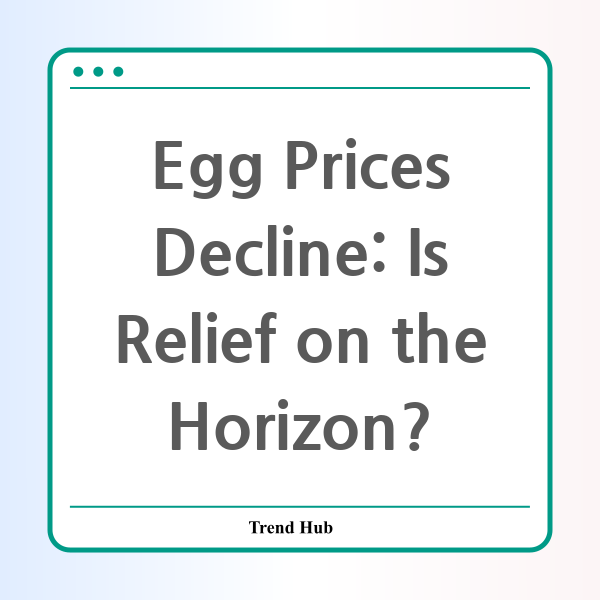* This website participates in the Amazon Affiliate Program and earns from qualifying purchases.

Is the era of exorbitant egg prices finally coming to an end? As wholesale egg prices have recently fallen to $3.00 a dozen, many households may feel a sense of relief. However, a closer look reveals that while prices are decreasing, there are still significant factors at play that consumers should consider.
According to the USDA, the latest decline marks a 9% drop from the previous week, following February’s record high of $5.90 a dozen. This spike was largely attributed to a surge in avian influenza cases that affected over 30 million egg-laying birds. Thankfully, as cases begin to wane, grocery stores are seeing improved egg supplies, although some retailers still impose purchase limits to manage stock levels during this transition.
What’s notable is that the current price drop still leaves consumers facing historically high rates. In fact, February alone witnessed a staggering increase of 58.8% compared to the same month last year. This reality has led to a noticeable shift in consumer behavior, with a recent study indicating that nearly a third of Americans have halted their egg purchases in response to these financial strains.
According to the findings, 34% of American adults are now opting out of buying eggs altogether, with the majority stating they will only return to purchasing once prices drop to $5 or less per carton. This situation seems to be affecting not just purchasing habits but also cooking routines, as 61% of respondents reported using fewer eggs in their meals due to high costs. The average American consumer perceives the cost of eggs to be around $7 a dozen, and many claim they would cease buying eggs entirely if prices reach $8.
Interestingly, the state of Illinois is witnessing one of the most drastic increases, with egg prices rising by an astonishing 1,048% from $0.42 to approximately $4.82. Clearly, the landscape of egg pricing varies significantly across the United States, intensified by regional supply chain issues and avian flu challenges.
As American households grapple with these rising costs, a significant 67% of consumers are attributing the price hikes to the avian flu crisis, while 31% believe that government regulations may be a contributing factor. It's interesting to note how political discourse has emerged around this staple food; it has become a talking point on both sides of the aisle, especially as politicians seek to address the public's concerns regarding food security and affordability.
While price decreases in the wholesale market are promising, it’s crucial to remember that it often takes weeks for these reductions to reflect on grocery store shelves. So, consumers may still face higher prices than expected in the short term. Additionally, until supply chains stabilize and consumer demand adjusts, we may not see significant relief at the cash register just yet.
In conclusion, while the signs of declining egg prices are encouraging, they come with a caveat that consumers should remain aware of—historically high prices and ongoing economic pressures mean that many shoppers are still hesitant to return to their egg purchasing patterns. The hope is that as supply chains improve and avian flu cases decline, we might eventually see a more stable and affordable egg market.
* This website participates in the Amazon Affiliate Program and earns from qualifying purchases.